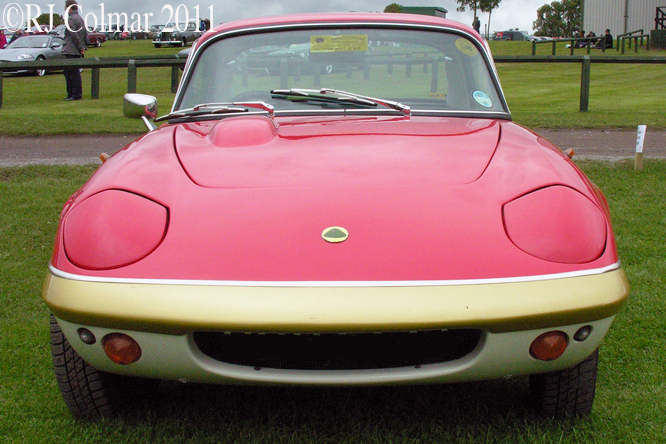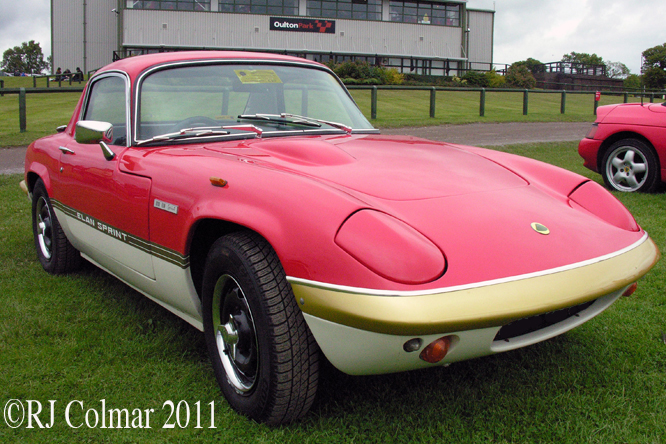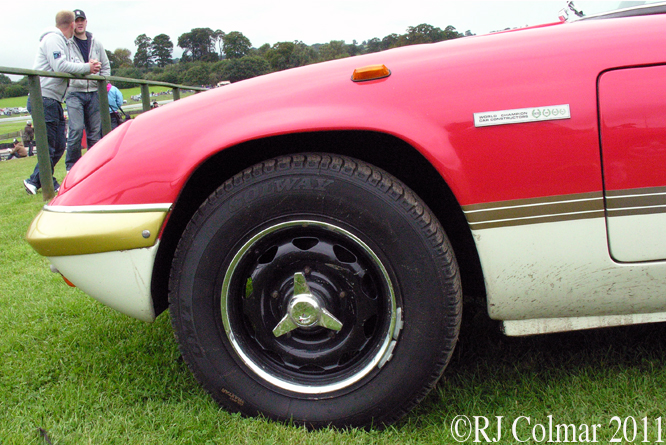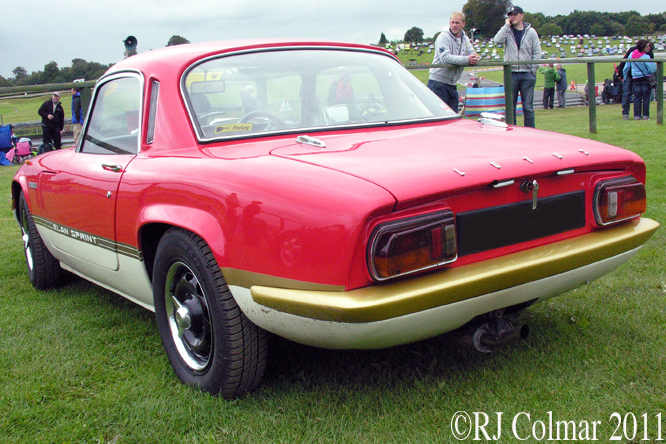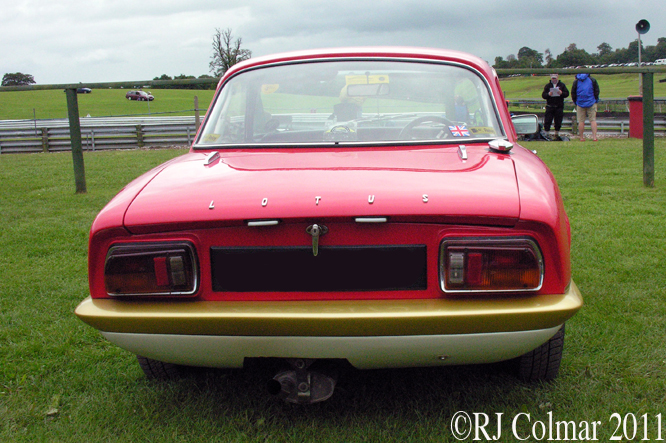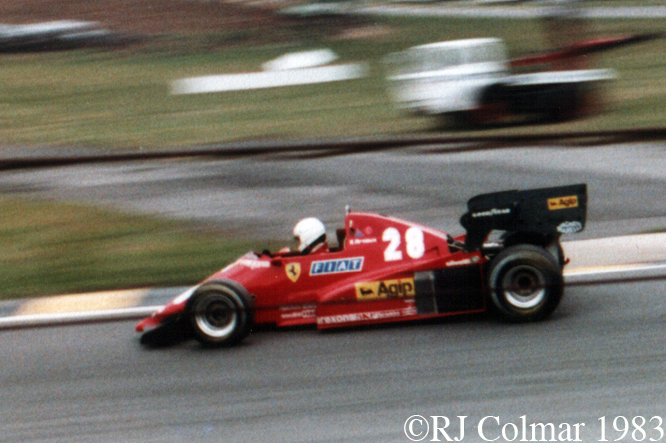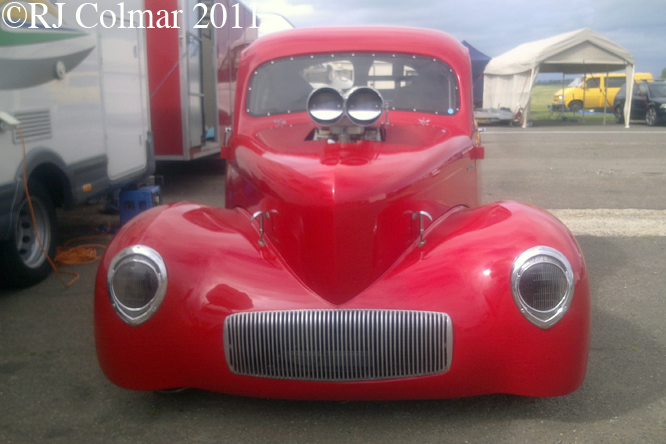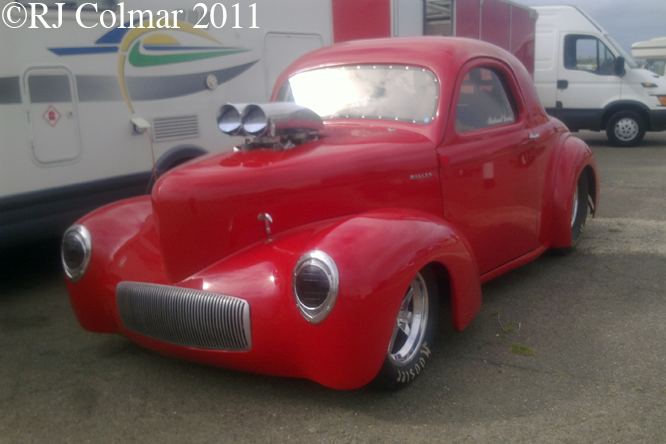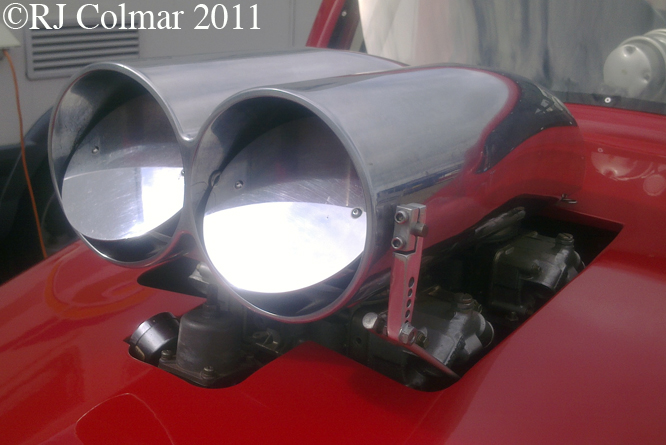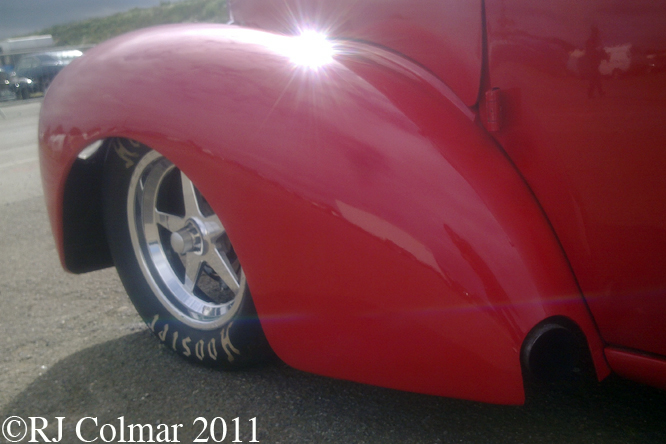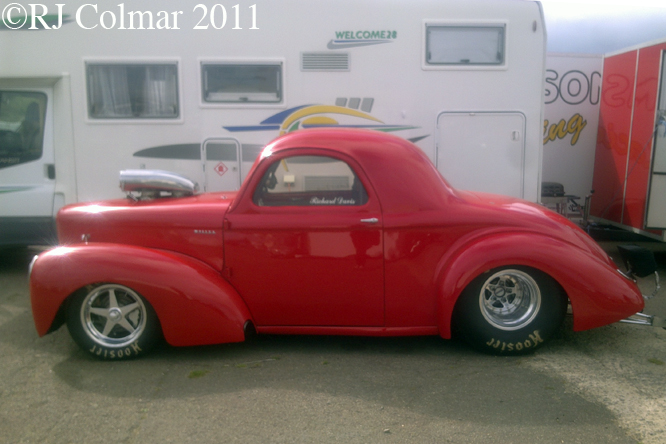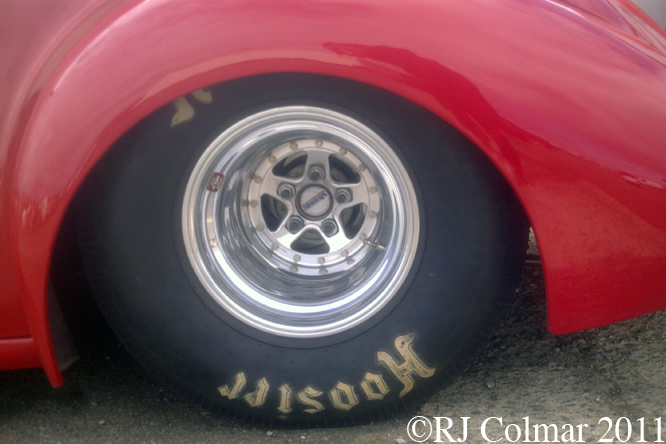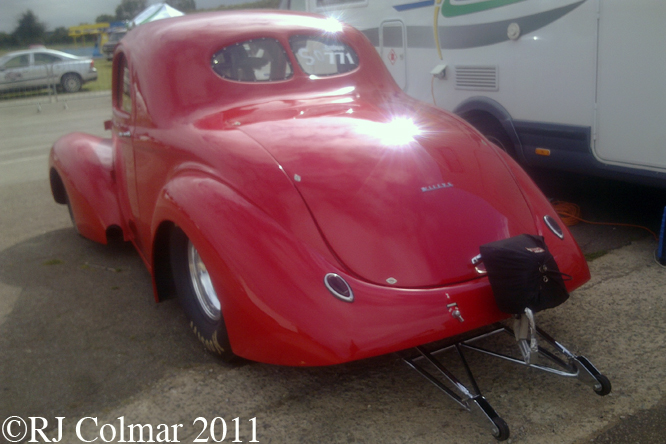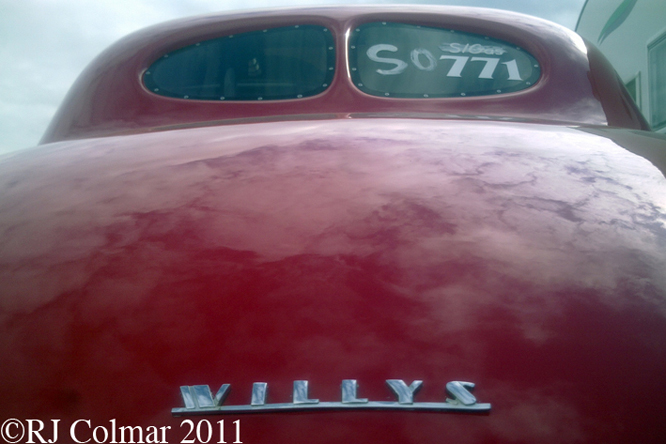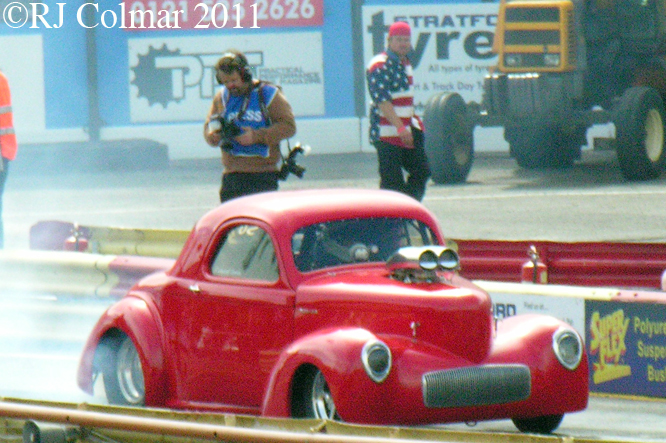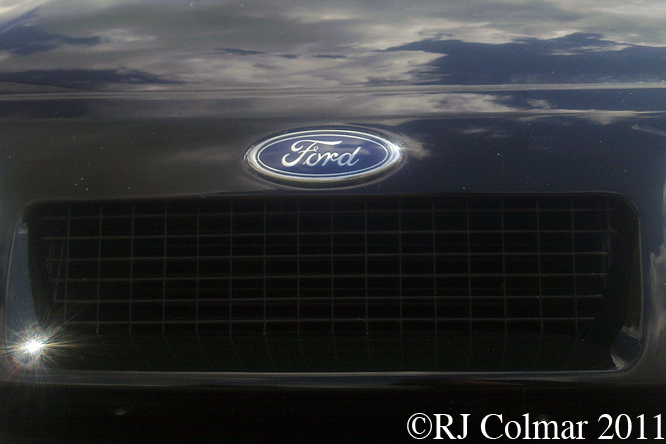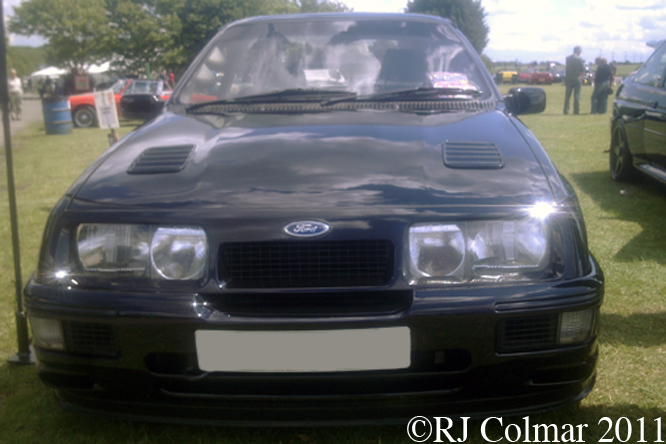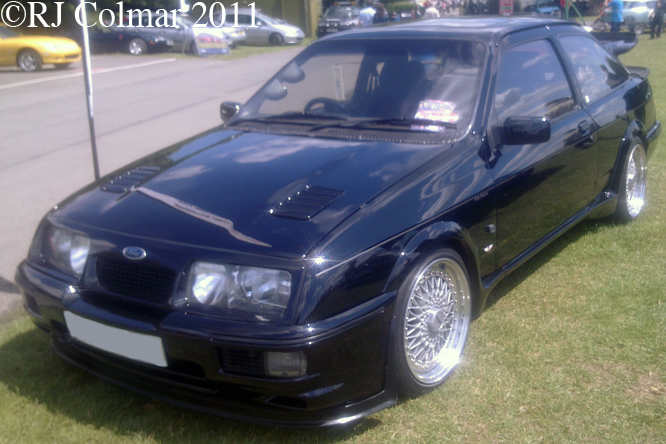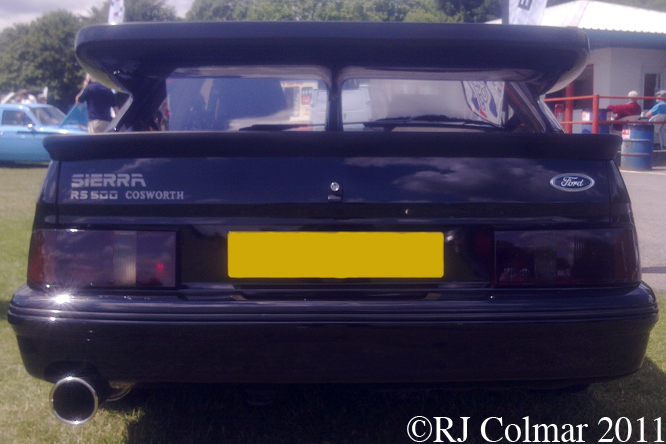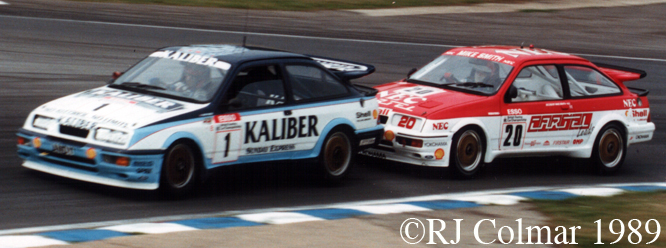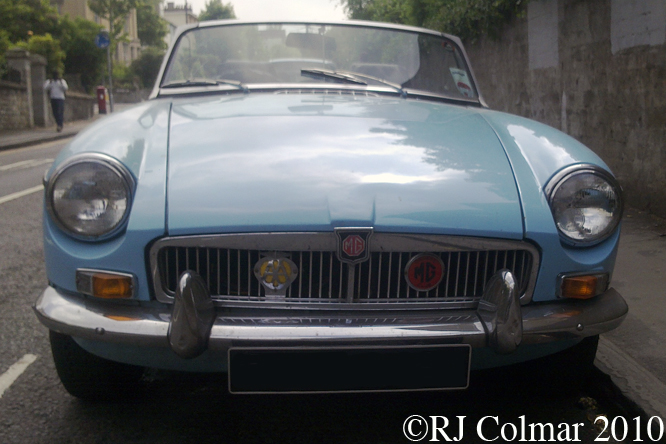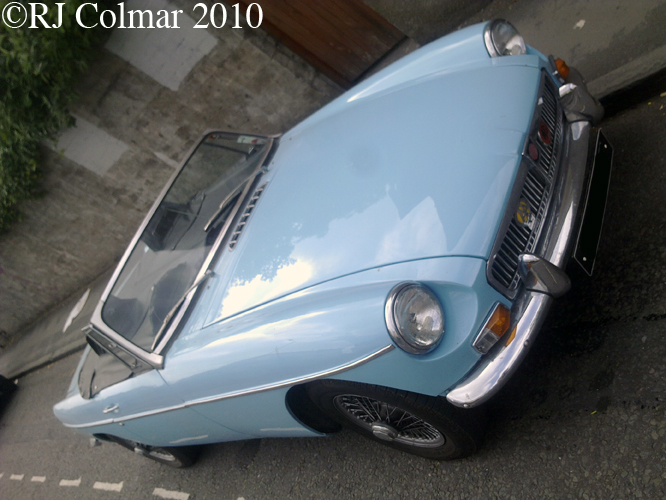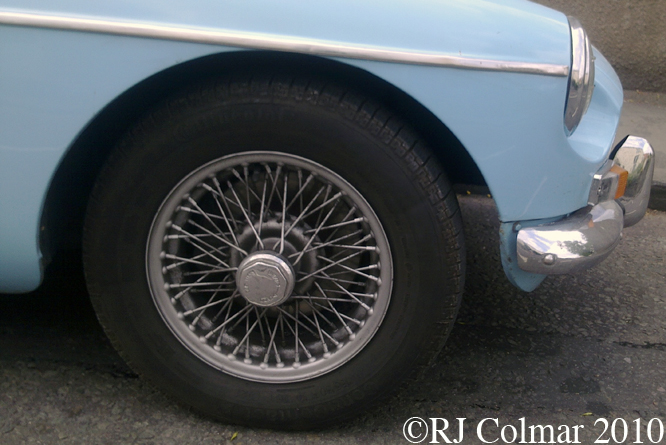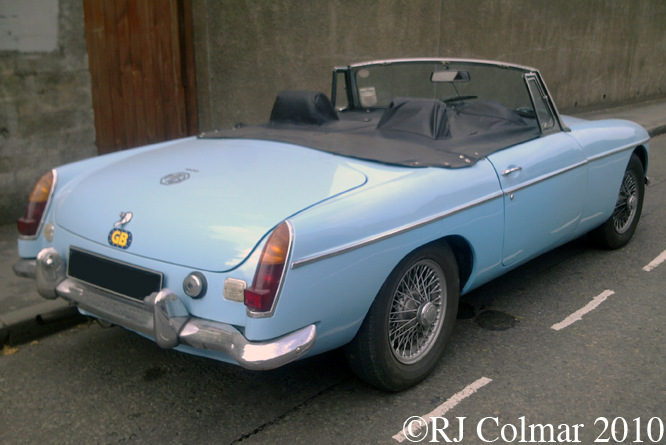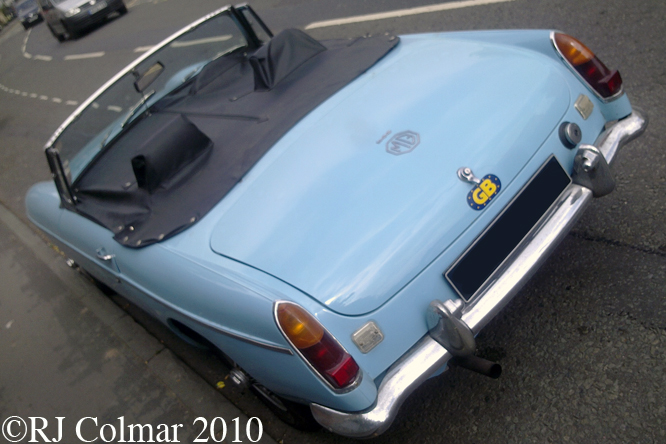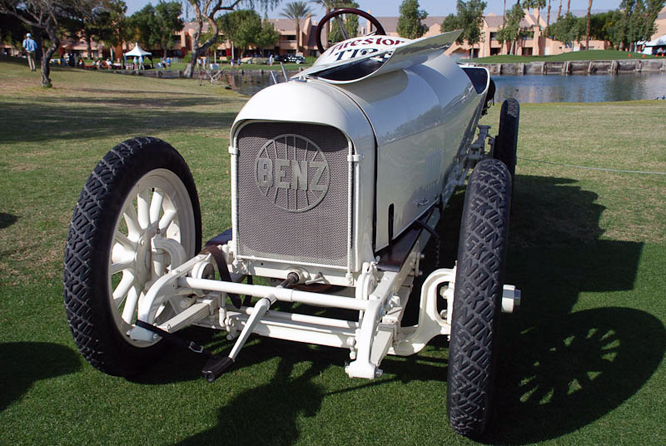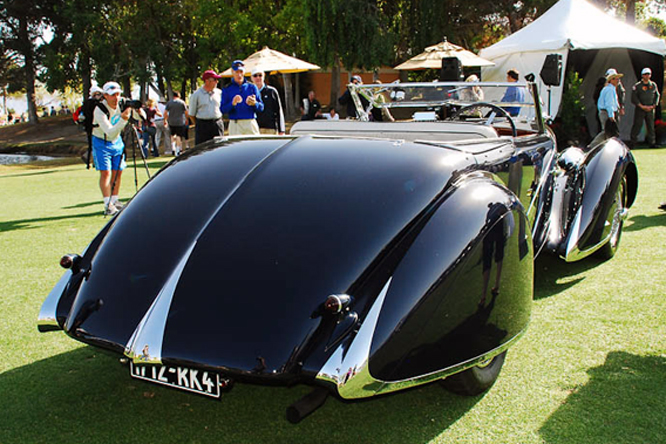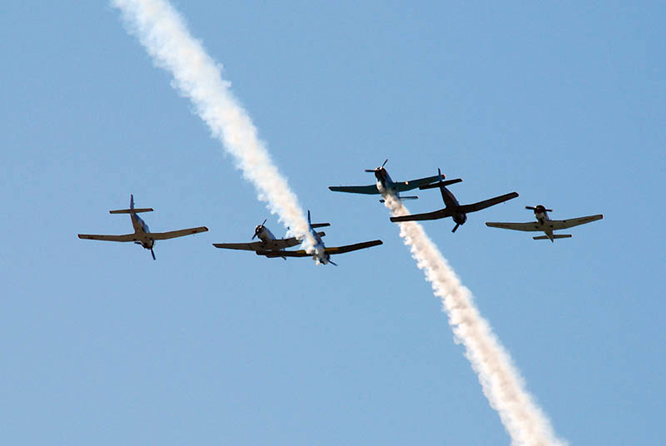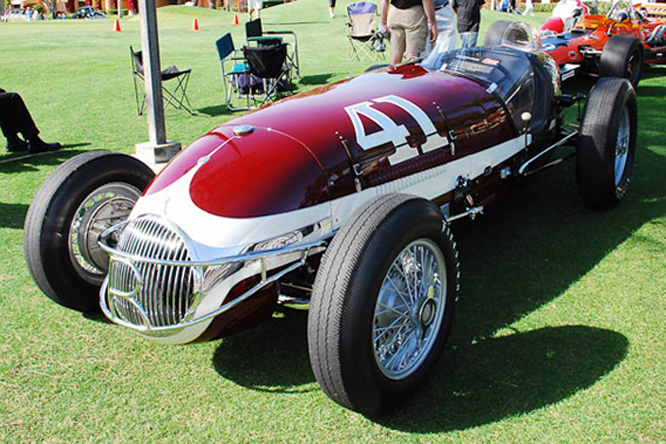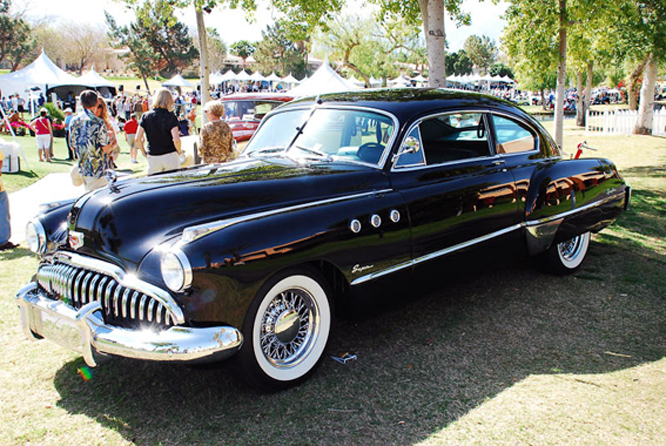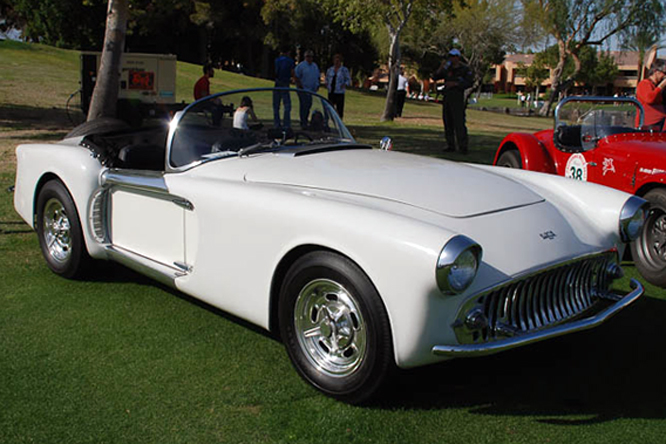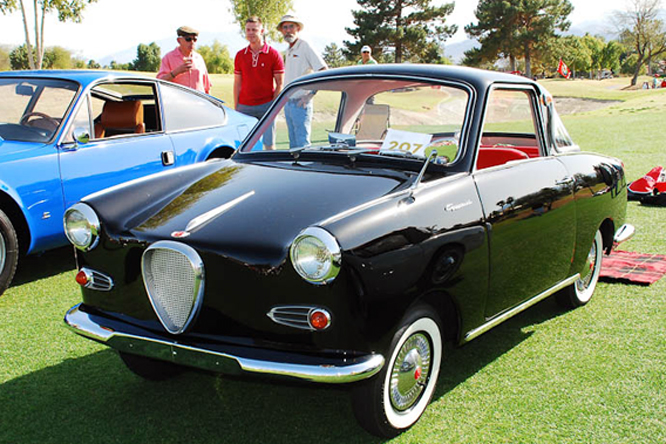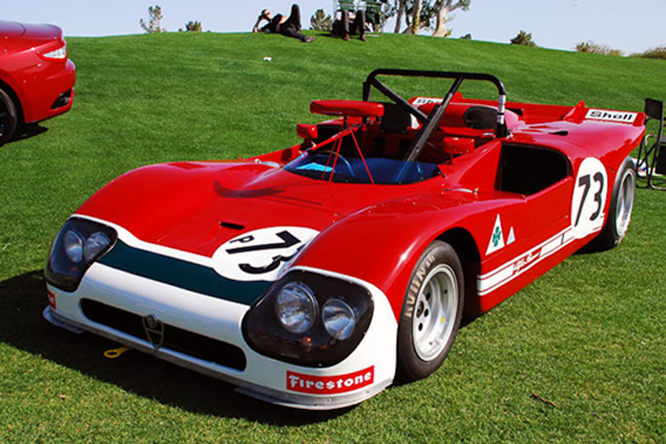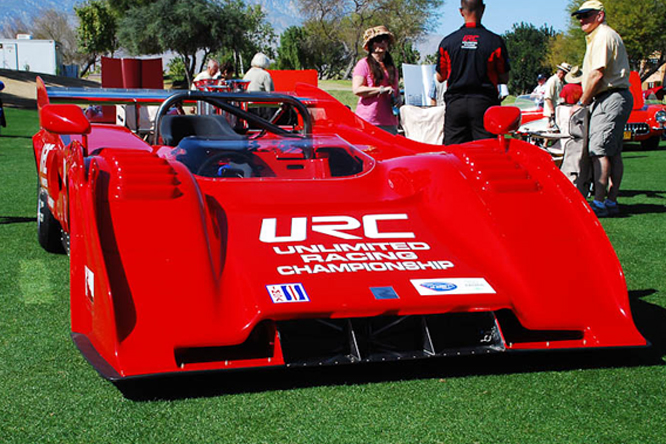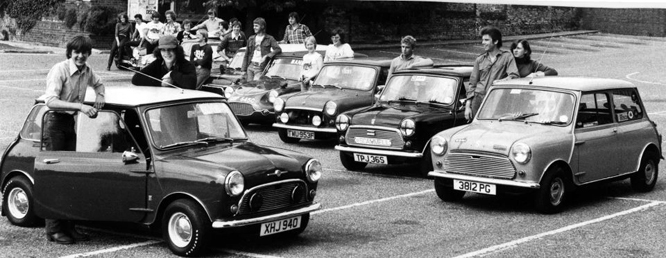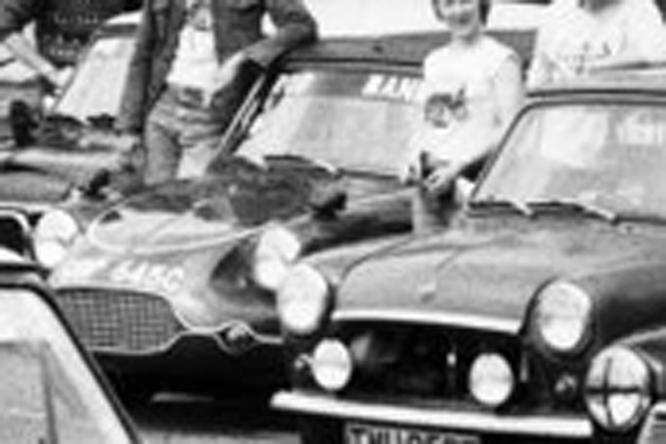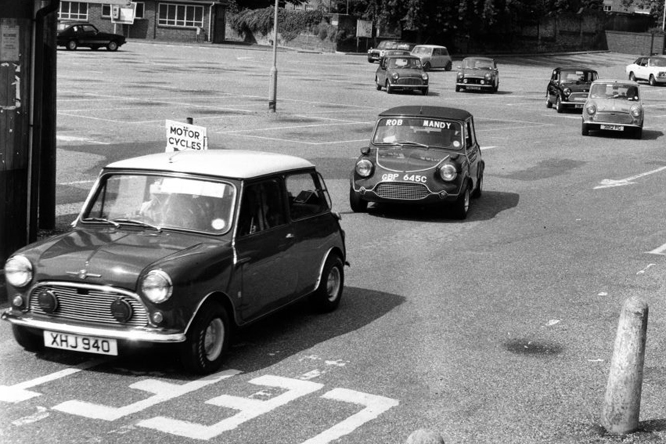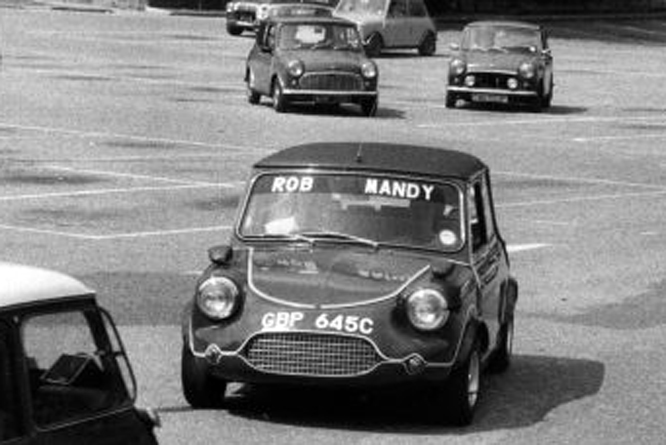It is well known in the motor trade that you know a model is coming to the end of it’s life when the limited editions and special paint jobs start appearing.
Falling Elan S4 sales and the suggestion that the Elan was falling behind the competition in a group test may have led Lotus Sales Director Graham Arnold suggesting that a revamped Elan be launched with a paint job derived from the Gold Leaf Team Lotus Grand Prix cars which were about to seal the teams forth World Constructors Championship in 1970.
The Elan Sprint was also given a new big valve head that is said to have been developed in just 10 days which boosted power from 115 to 125 hp. The Webber carburetors of Elan Sprint motor did not need the power bulge, required by the earlier S4 model Stromberg carburetors, in the bonnet / hood though early examples like the one seen here at Oulton Park are thought to have been fitted with bonnets from the previous S4 series to use up the surplus stock.
The badge on the wing celebrates World Constructors Championship victories in 1963, ’65, ’68 and ’70, this badge on the last Sprint models produced between November 1972 and May ’73 included a fifth 1972 championship victory.
It is suggested in some circles that the gold stripes between the two tone paintwork were applied to cover quality issues where the two colours meet, however the Gold Leaf Grand Prix cars on which the Elan Sprint paint scheme is based also featured a gold stripe twixt the red and white colours. Sprints could be ordered in single colours, at additional cost.
When Autocar tested the Elan Sprint in 1971 they liked the refinement, speed and handling but were not so keen on the ride, cramped cockpit or heating and ventilation.
It is thought 1353 Elan Sprints were built between January 1971 and March 1973 when Elan production ceased because the model did not meet new regulation requirements introduced for 1974 in US and European Markets.
Thanks for joining me on this ‘Two Tone Paint Standard’ edition of ‘Gettin’ a li’l psycho on tyres’, I hope you will join me again tomorrow. Don’t forget to come back now !

